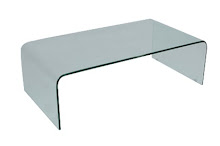As we are going to be having a rather large front garden we have decided to that some sort of feature was needed.
Both Brett and I love gargoyles mainly the cute/nice or funny looking ones – I even have a mini gargoyle statue on my desk at work!

We also like to put our own mark on things – so instead of buying normal plinth to but the gargoyle on we found this great square bird bath which we will paint black to match the house and will prop our gargoyle up in.
Once the gargoyle is in there we will place plants around it to add in some green!
So far we have found this cute Patient Protector Gargoyle – we is very cute!
Waiting patiently but undeterred this cute gargoyle sculpture is made from designer resin and finished with a weathered greystone finish. 25cm W x 25cm D x 27 cm H.

Hopefully we don't freak out the neighbours!
"Gargoyle", the dictionary definition: a spout usually in the form of a grotesquely carved face or figure, projecting from a roof gutter. From the Old French "gargouille" and the Late Latin "gurgulio", both meaning throat. (from Chambers Concise dictionary)
"Gargoyles (in the strict sense) are carvings on the outside of buildings designed to direct water from the roof away from the base of the walls... ...Some gargoyles are undecorated but many are zoomorphic or anthropomorphic - often very imaginative and/or grotesque. This has led to the term 'gargoyle' being applied more widely to any grotesque carving in medieval buildings." (from Bob Trubshaw, posting in BritArch archives, 23Feb1999)
Architectural History
Gargoyles in the strict plumbing sense of the word have been around since the time of the Ancient Greeks or before. They became very popular on architecture in Medieval times, with a resurgence in the Victorian era, and to some extent more recently. Other periods have none or few carved ones. Saxon churches (a little before Medieval times) that I've seen usually have troughs but whether these are original or later additions is hard to say. Large buildings of the Elizabethan period (a little after Medieval times) did use channels or troughs but I've never seen or heard of carved ones.
Their first usage in the last thousand years or more seems to have been in the early 1200's as channels or tubes to shed rainwater from buildings, to keep the rainwater off the buildings themselves and away from the foundations. Strong evidence for this purely plumbing interpretation is that initially most were made of wood, some made of the more expensive stone, and were generally undecorated.
As time progressed, more stone ones appeared as did lining some with lead and decoration in the form of carvings of people or animals or grotesque representations of these (grotesque in the sense of being extravagantly formed, bizarre, ludicrous, absurd, fantastic and also in the sense of being ugly and frightening). Often these carvings are so imaginative as to bear little or no resemblance to any conventional creature and are the products of fertile imaginations and skilled hands.
They are common on the more expensive buildings from medieval times, particularly cathedrals and churches, and particularly France, and particularly the Gothic style. A few plain ones survive on non-religious buildings like the odd castle but rarely compared with religious buildings. Presumably, as today, the average wage did not run as far as paying for ornate stone guttering for your own humble dwelling.
It seems that this increasingly ornate carving extended to non-functional architectural features resembling them, so that "gargoyles" appear on the sides of towers and walls, and to stretch the term even further, inside the buildings (though these are more correctly called "grotesques" and "chimeras", of which gargoyles are only one kind).










































































































No comments:
Post a Comment